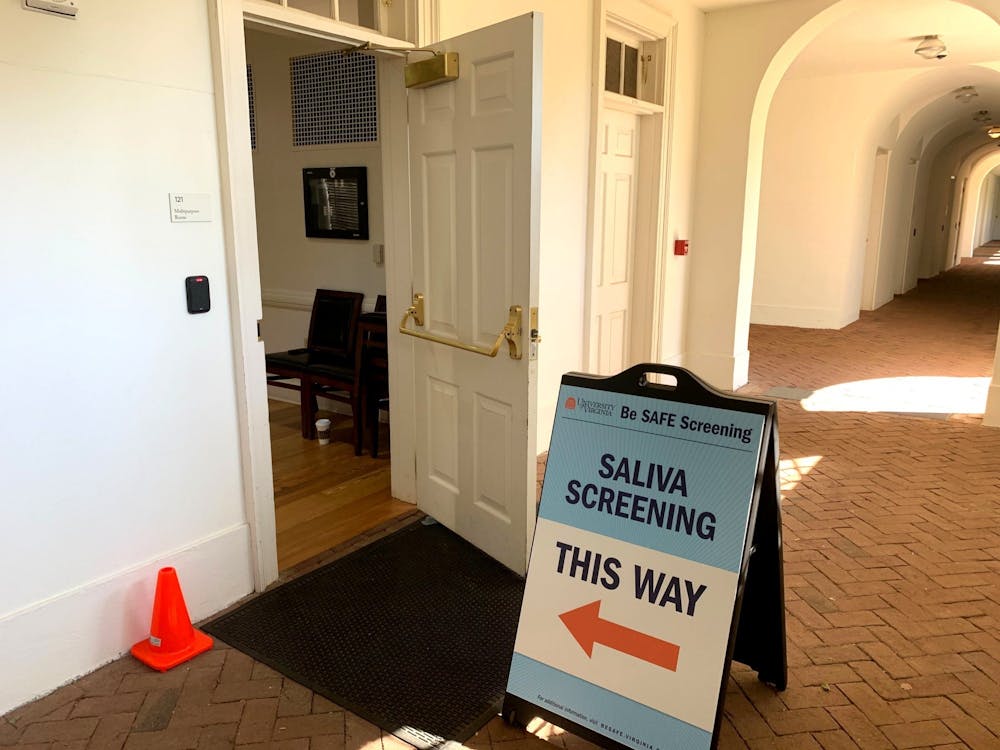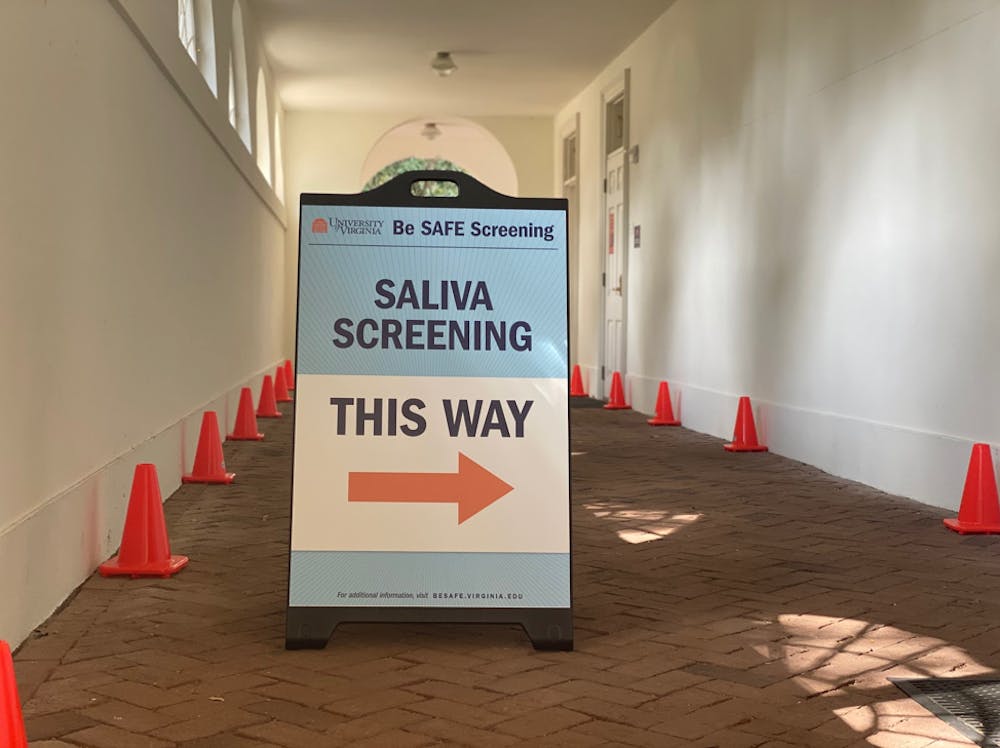The University began implementing its new prevalence testing initiative last week, which uses saliva samples to procure rapid results across the University community.
557 saliva screening tests were administered between Oct. 1 and Oct. 8. Out of those tests, 537 were negative, 12 positive, four inconclusive and four were categorized as invalid.
“Our approach if the results are inconclusive or invalid is to test the saliva sample a second time,” University spokesperson Wes Hester said in an email to the Cavalier Daily. “Positive outcomes are reviewed by an expert and repeated in borderline cases.”
As part of the University’s prevalence screening initiative, the saliva testing program is primarily intended to catch and stop potential outbreaks in the community through identification of asymptomatic carriers.
“I would also add that the saliva testing technology the University is using is a PCR-based rapid testing technology, and correlates well with the ability of the nasal swab test to detect the virus,” Hester wrote.
PCR refers to a laboratory technique called polymerase chain reaction. PCRs are molecular tests, further subcategorized as nucleic acid amplification tests, Bonnie Simmons M.D, Chair of Urgent Care at Optum Tri-State/ProHEALTH, explained in an interview with The Cavalier Daily. These tests selectively amplify trace amounts of genetic material, identifying specific genome fragments of the virus that cause what we recognize as COVID-19 — SARS-CoV-2.
“The reason that's important is that the heating up, which is the amplification, is what helps us identify the RNA fragments, which is the virus,” Simmons said.
Students are notified if they have been selected for prevalence testing via text or email and once notified, testing is mandatory. Pre-testing protocol can be found on the University’s Be SAFE website.
Currently, the Rotunda Multipurpose Room and Central Parking Garage are the only on-Grounds screening locations, open from 9 a.m. to 4 p.m. on weekdays.

Libby Klinger, a second-year College student described the experience as “simple and pretty painless.”
Klinger received an email from the school two days before her scheduled test time which included pre-test instructions and the three-hour time window to get tested.
Once in the Multipurpose Room, Klinger was directed to a plexiglass screen where a worker scanned her student ID, then handed her a tube kit and instructions on how to procure the sample. Students were directed outside to the Rotunda courtyard for privacy and to safely distance while “giving the sample” — two-to-five milliliters of drool.
“They put a barcode on the test tube and then basically it’s kind of weird — they told us to go wherever you felt comfortable to give the sample,” said third-year Katherine Keese, who was tested on Wednesday.
Fourth-year Curry student Sade Storthz described the situation similarly, saying, “the only weird part was that everybody was facing the wall awkwardly trying to spit in a tube.”
“So many people were spit shy, including me … it took me way too long to make five milliliters of saliva,” Storthz said.
From start to finish, the process takes from three to five minutes. Students have been receiving their results within 24 hours, which brought Storthz peace of mind.
“I kind of like being tested, because afterward it's just so nice to know that you've been doing a good job,” Storthz said.
In the coming weeks, the University plans to increase testing volume to administer weekly tests to all students living in University housing. Still, when asked whether the program will allow asymptomatic students to be tested more often than every 60 days, Hester noted that “it’s too soon to say how rapidly the saliva program will expand.”
“Our initial target is 300 per day and we expect to increase substantially thereafter,” Hester said. “We also anticipate it being used in greater quantity to conduct asymptomatic tests among students living off-Grounds.”
Before the end of the semester, the University hopes to reach a point where all students will be screened weekly through one testing program or another, Hester said.
If implemented, the University would be joining schools like Boston College which currently administers around 6,000 to 8,000 tests per week amongst students, faculty and staff. Likewise at Vanderbilt University, undergraduate students were required to register for a regularly scheduled testing time block.
Since implementing weekly testing, Boston College — which enrolls 14,600 students — reported a weekly positivity rate of 0.16 percent in an update on its website, compared to the Massachusetts average of 1.0 percent. Comparably, during the week of Sept. 27 to Oct. 3, the University’s COVID-19 dashboard reported a 7.19 percent positivity rate, or 183 positive tests out of the 2,544 conducted.
“Part of our focus on mitigating the spread of the virus is to carefully watch a number of indicators and to determine the right combination of different programs to respond to what we are seeing,” Hester said.
This includes deciding where to use the wastewater analysis and whether to implement further asymptomatic testing. The approach will now include decisions on how and where to apply the new saliva testing program.

“As with our other testing and analysis programs … we look forward to learning from our early experiences and figuring out how best to use it in our overall program and how it might grow,” Hester added.
The University will continue to conduct wastewater testing, which acts as a pooled sample allowing faculty and scientists to surveil for COVID-19 without individually testing dorm residents. Several first-year dormitories have been tested following wastewater indicators.
Provost Liz Magill and Chief Operating Officer J.J. Davis announced the new initiative in a Returns to Ground Update and expressed hopes for the program’s future.
“We are constantly improving and expanding our ability to prevent, detect and respond to COVID-19 within the U.Va. community and to use those advancements for the good of the Charlottesville/Albemarle region and the people of Virginia,” Magill wrote.







